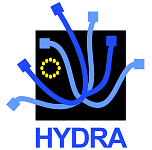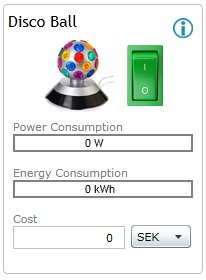Articles Hierarchy
Articles: Articles
An integrated scenario using Hydra Technology
During the HYDRA Annual Reviews two scenarios were demonstrated in the building automation and healthcare. In this third prototype development iteration, Andrea Guarise from Innova has contributed this integrated scenario considering also the agriculture domain, where the different functions and components developed in the domain use cases are demonstrated. The scope is not to foresee an imaginable future solution and service offering, but to show the flexibility gained through applying the Hydra middleware framework in different domains.
During the HYDRA Annual Reviews two scenarios were demonstrated in the building automation and healthcare. In this third prototype development iteration, Andrea Guarise from Innova has contributed this integrated scenario considering also the agriculture domain, where the different functions and components developed in the domain use cases are demonstrated. The scope is not to foresee an imaginable future solution and service offering, but to show the flexibility gained through applying the Hydra middleware framework in different domains.
Congratulations to the graduates who have participated in the Hydra project
To date the Hydra Middleware has featured in one PhD thesis, five Master theses and one Bachelor thesis. Currently, even more students are involved with the work carried out in the Hydra project and we can therefore expect to see the Hydra project mentioned in more theses in the future. Here you will find the abstracts of some of the theses that haven been completed successfully thus far.
To date the Hydra Middleware has featured in one PhD thesis, five Master theses and one Bachelor thesis. Currently, even more students are involved with the work carried out in the Hydra project and we can therefore expect to see the Hydra project mentioned in more theses in the future. Here you will find the abstracts of some of the theses that haven been completed successfully thus far.
Security resolution
Enabling Inclusiveness and Semantic Interoperability are the two main objectives of Hydra. This raise significant challenges both in terms of securing Hydra middleware itself and in terms of enabling security resolution in a heterogeneous environment.
Enabling Inclusiveness and Semantic Interoperability are the two main objectives of Hydra. This raise significant challenges both in terms of securing Hydra middleware itself and in terms of enabling security resolution in a heterogeneous environment.
Semantic Technologies and their application in Hydra project
The HYDRA project introduces the Semantic Model Driven Architecture (Semantic MDA) which aims to facilitate application development and to promote semantic interoperability for services and devices. The semantic MDA of HYDRA includes a set of ontology-based models and describes how these models can be used both at the design- and run-time. The basic idea behind the HYDRA Semantic MDA is to differentiate between physical devices and the application's view of the device. HYDRA introduced the concept of Semantic Devices, which represent models of the real devices and serve as logical units, which can be semantically discovered and provide information about the device capabilities and services.
The HYDRA project introduces the Semantic Model Driven Architecture (Semantic MDA) which aims to facilitate application development and to promote semantic interoperability for services and devices. The semantic MDA of HYDRA includes a set of ontology-based models and describes how these models can be used both at the design- and run-time. The basic idea behind the HYDRA Semantic MDA is to differentiate between physical devices and the application's view of the device. HYDRA introduced the concept of Semantic Devices, which represent models of the real devices and serve as logical units, which can be semantically discovered and provide information about the device capabilities and services.





 The Hydra project is co-funded by the
The Hydra project is co-funded by the 


